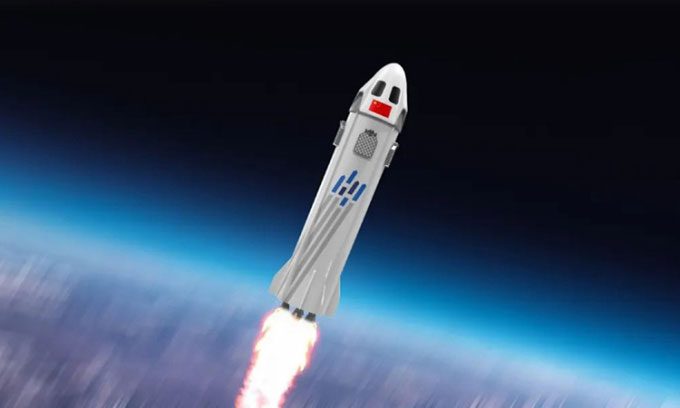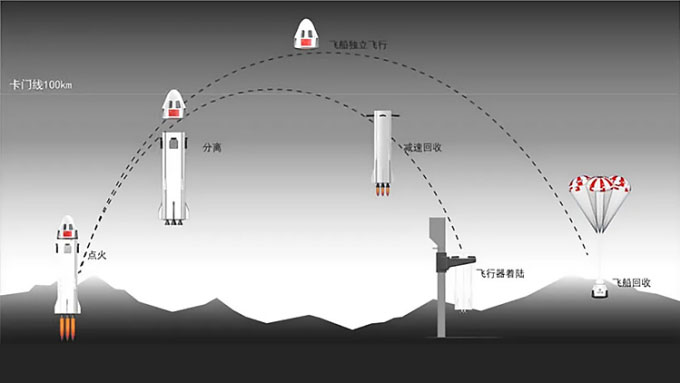China Plans to Launch Its First Paying Space Tourists on Suborbital Flights by 2025.
Senior scientist Yang Yiqiang, former general director of the Long March 11 rocket project in 2018 and founder of the government-backed space company CAS Space, predicts that commercial space tourism will “flourish” in the coming years.

Simulation of Chinese rockets and spacecraft taking humans on suborbital journeys. (Photo: CAS Space).
“With improvements in the business model, China plans to start offering suborbital travel services in 2025, at a cost of approximately 2 – 3 million yuan (286,000 – 430,000 USD),” Global Times quoted Yang on September 17.
Yang stated that suborbital travel has become more technically refined compared to other forms of space travel and is suitable for most people. Future flights from China could simultaneously carry 7 passengers above the Kármán line at an altitude of over 100 km, which is considered the boundary between Earth’s atmosphere and outer space. The entire journey will last about 10 minutes, during which passengers will experience a few minutes of microgravity.
In a statement last year, CAS Space mentioned that they are researching and developing partially reusable rockets and spacecraft for these trips. Upon reaching the Kármán line, the rocket will separate, then return to the atmosphere and land in a controlled manner using engines, while the spacecraft continues to coast before landing on the ground with parachutes.

Simulation of suborbital flight using CAS Space’s launch system. (Photo: CAS Space).
“With the rapid advancement of space technology, a suborbital journey for ordinary people is no longer a fantasy but is gradually becoming a reality. A trip to outer space will provide a completely new experience for travelers,” Yang added.
According to Yang, China’s commercial space travel services will boom by 2027 when the country completes its large satellite networks and can reuse rockets at low costs.
China is a latecomer in commercial space activities but is rapidly accelerating, with 370 companies involved in commercial space as of last year, according to the business information platform Qichacha.
“China’s commercial space flights have the best opportunities for development and will catch up with the U.S. within 10 years,” Yang predicts.
CAS Space was established in 2018 and is partially owned by the Chinese Academy of Sciences. It is one of the largest commercial space companies in East Asia in recent years.
In July, they signed a cooperation agreement with the China Travel Group, committing to jointly promote the adoption of commercial space technologies and create a new space economy such as space tourism. CAS Space will conduct a series of unmanned test flights starting next year before serving paying passengers in 2025.


















































